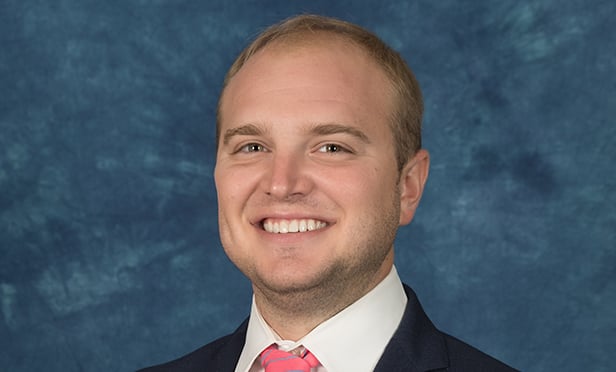[IMGCAP(1)]
NEW YORK CITY—Over the past 18 months or so, GlobeSt.com has published a slew of stories focused on individual submarkets and how, post-recession, they're finding their upcycle momentum. Usually the gas driving that Big Mo' is being pumped by Millennials. They're moving away from Mom and Pop's suburban split level into former city-based industrial complexes converted to lofts and near the tech start-ups where they work.
We thought it interesting to take the pulse of two of these submarkets, although putting Williamsburg, Brooklyn and the Arts District of Los Angeles side-by-side may seem a feat of geographic and cultural magic. But two principals of Lee & Associates, CEO Jeff Rinkov on the West Coast and Peter Levitan, senior managing director of the New York City office, were more than happy to push the two markets together to see how they differ and how they are much the same.
"The greatest correlation between the growth of the Los Angeles Arts District and Williamsburg was the path both took from largely industrial areas to retail-based, live/work/play environments," says Rinkov. And in both, the transformation was more evolutionary than revolutionary.
Rinkov explains that in the City of Angels the heat started to rise with the creation years ago of the Nokia Theatre (now Microsoft Theater) and, of course, Staples Center. While not properly in the Arts District, they were close enough to draw attention away from the hardcore nine-to-five area formerly known as the L.A. Financial District.
"With the growing popularity of the West L.A. market and the rent increases we've seen there, a lot of large service firms and office occupiers have moved downtown to mitigate cost," he explains. It allowed the population to take advantage of "the opportunity to reside closer to work, populate that downtown market and drive a lot of the development that's occurring there."
And, says Levitan, much the same took place in Williamsburg, which, like a lot of Brooklyn, was first seen as merely a lower-cost alternative for potential city dwellers. Little by little, the formerly industrial area became known for its arts, nightlife and the character of its buildings. "As density and tourism increased and more retail and restaurant attractions came in, Williamsburg really started to become more of a destination," he says. "It's a new concept that a Brooklyn neighborhood would be a preference to Manhattan."
"Since 2007 the residential growth has been tremendous," he continues. "The appreciation for interesting space has grown and resulted in a lot more density and spending power that in turn has attracted more creditworthy retailers to traditionally under-retailed Williamsburg."
Ditto the Arts District, which Rinkov describes as previously laden with industrial and certainly without any ancillary services such as retail or restaurants. But this he says was true of downtown generally. While Staples and Nokia fired up an interest in high-rise hotels and offices, there were few ancillary services to support the growing population. Now developers are catching on. More on that in a bit.
Growing popularity of course means growing rents. In Williamsburg, in fact, prices "are the same if not higher than some popular neighborhoods in Manhattan," says Levitan.
[IMGCAP(3)]
Indeed. "Williamsburg rents were under $100 a square foot in 1997," he estimates. "They probably ranged between $30 and $80 a foot on Bedford Avenue, which is the neighborhood's strongest corridor." Since then, they increased to roughly $100 to $150 a foot by 2011, and today, average asking is $347. "And we're seeing some deals ask $500. Over eight years, the rent has gone up almost by a multiple of five."
Here the two markets diverge, with the L.A. Arts District lagging its New York City counterpart, the natural effect of local market dynamics. In both the Arts District and the nearby South Park area, Rinkov says rents are closer to where Williamsburg was in '07. But growing, he adds.
And growing rents means growing value, which in turn means growing sales prices. Retail buildings in Williamsburg, especially along the main Bedford Avenue Corridor, are going for anywhere from $400 to $3,300 per foot (cap rates are tricky, says Levitan, since most assets are sold based on added value). In the L.A. Arts District they're commanding price tags of $500 and cap rates topping out at 5%.
Of course, land is at a premium in the shoulder-to-shoulder environs of New York City, although some investors have made that work for them. In an investment market he characterizes as "ferocious," Levitan says, "there have been clients of mine who have put together assemblages or have bought enough plots of land that they've been able to create their own corridor. You put together one very large big-box tenant that attracts retailers to a place that had nothing before and you've created a huge opportunity for increased value."
Like Levitan, Rinkov is seeing investments take off. "We've seen land prices almost quadruple in the past 24 months, to a current $300 per-foot. And the only way those land prices grow is because of better density, higher and better uses and ultimately higher underlying rents."
Speculative development—as well as adaptive re-use—is on fire in L.A. "Right now," he says, "there are more than 1,000 residential units in the pipeline, and we'll probably see another 3,000 to 5,000 come online in the next two to three years. Some of course is adaptive re-use of older industrial sites that once dominated the area, but much is also ground-up spec development."
Business-friendly zoning in L.A. has increased former height restrictions, adding to the potential hotel, condo and office density of the area and indirectly the support of the ancillary retail, entertainment and restaurant venues. "As a native, I often tell people that we're finally getting the downtown they promised us 35 and 40 years ago."
[IMGCAP(2)]
And, as in Williamsburg, since many of the buildings in the Arts District are older, "they have a certain character—older brick buildings that were used in manufacturing, and they lend themselves to development for loft space, creative office spaces and mixed-use," says the CEO. "And they're typically trading at a discount to the historic financial core. Plus, there's a hip factor because it hasn't been institutionalized yet."
On both coasts, the early movers, says Levitan, are "the investors who were called crazy. Now they look like the smartest guys in the room."
So what's ahead? Will the momentum—of both the East and West Coast varieties—sustain itself?
"In Downtown L.A., there's a development psyche and a pipeline that's well-capitalized," says Rinkov. "As a result, we probably have 24 to 36 months for the momentum to continue with more adaptive re-use and more development of retail, office and hotels."
And Levitan sees much the same where only a tree once grew: "Williamsburg is still poised for growth. Even though it's more mature than downtown L.A., leasing to significant, creditworthy companies has really been a recent development. And these will continue to feed the pipeline of traffic and value in the neighborhood."
© 2025 ALM Global, LLC, All Rights Reserved. Request academic re-use from www.copyright.com. All other uses, submit a request to [email protected]. For more information visit Asset & Logo Licensing.








